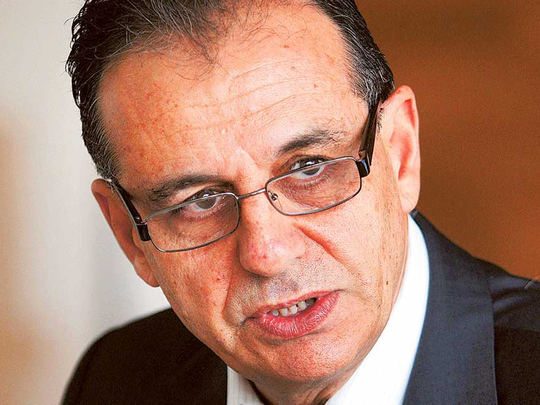
Dubai: The sharp and sustained decline in oil prices since mid- 2014 has made fiscal adjustment unavoidable for the six oil exporting Gulf Cooperation Council (GCC) countries. Earnest fiscal consolidation efforts are yielding results in terms of containing the bulging of fiscal deficits, according to Institute of International Finance (IIF).
“Consolidated government spending was cut by 12 per cent in real terms in 2015 compared to an average annual increase of 15 per cent in 2003-2014, and we expect a further 8 per cent cut this year,” said Garbis Iradian, IIF’s Chief Economist, Mena (Middle East and North Africa).
Public investment has borne the brunt of the fiscal consolidation as low-priority projects have been cancelled. In addition, subsidies are being reduced or eliminated, and the wage bill is being contained.
With further decline in expenditure in 2016, and assuming a freezing of the level of spending thereafter in real terms, the ratio of government expenditure to non-oil GDP (gross domestic product) is projected to decline from 60 per cent in 2014 to 40 per cent by 2020.
Fiscal adjustment is also underway through mobilisation of additional non-oil revenue. The authorities are raising fees for public services, and a value added tax (VAT) at 5 per cent is expected to be introduced in 2018 in all GCC countries. Also, the authorities plan to privatise a range of public sector assets.
The significant cut in spending has reduced fiscal break even oil prices in all countries. The weighted average fiscal break even price of oil for the GCC is expected to decline steadily from a peak of $87 per barrel in 2014 to $66 per barrel by 2017.
Notwithstanding the consolidation efforts, the fiscal balance is expected to remain in a deficit of $120 billion (8.7 per cent of GDP) in 2016, the largest deficit in the history of the region. Lower oil revenues will be offset by the projected 10 per cent decrease in real spending.
While public foreign assets (reserves and SWFs) are large and are sufficient to finance the deficits at least over the medium term, a number of countries are increasingly turning to international debt markets to limit crowding out of local business financing.
“The sizeable fiscal consolidation efforts should put the fiscal stance on a more sustainable footing in the medium term provided that oil prices recover gradually to $60 per barrel by 2020, as assumed in our baseline scenario. Our projections show that the consolidated fiscal deficit would narrow steadily to about 1.8 per cent of GDP by 2020 and the public debt would peak at 45 per cent of GDP in 2020 and then broadly stabilise,” said Giyas Gökkent, senior economist, Africa Middle East, IIF.
With average oil prices expected to be $46 per barrel, the fiscal deficits are expected to widen somewhat in 2016. The drop in oil prices has shifted the aggregate current account from a surplus of $223 billion in 2014 to a deficit of $69 billion in 2016.
“The relatively low public debt ratios, large financial buffers, and the sizeable fiscal consolidation underway, combined with a modest recovery in global oil prices, should put fiscal positions on a more sustainable footing in most GCC countries. While public foreign assets will continue to decline, albeit from very high levels, import cover will remain well above 40 months through 2020,” Iradian said.
Overall GDP growth rate across the GCC is projected to weaken because of the oil price decline and fiscal consolidation efforts. Growth is expected to slow further to 1.9 per cent this year, from 2.9 per cent in 2015. Inflation is likely to remain subdued despite the upward adjustment in domestic fuel and electricity prices.
The authorities in the region are now increasingly relying on international borrowing to fund their deficits. In 2015, most financing was from domestic sources, including tapping into official reserves, withdrawal of deposits from banks and issuance of domestic bonds. The deficits this year and in 2017, however, are projected to be financed materially from foreign funding, given the low global interest rate environment, and tapping into Sovereign Wealth Funds.












